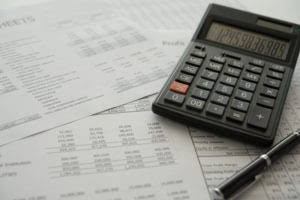
The contra asset account netbook value of the machinery by the end of the first year will be $80,000 ($100,000-$20,000) and $60,000 ($100,000-$40,000) by the end of the second year. This method helps a third person identify what the book value was at the time of purchase and the remaining value of an asset. If we show $60,000 as an asset in the third year, it will be challenging to understand whether $60,000 is all new purchases or the remaining value of an asset.

1. Purchase Discounts, Returns and Allowances Expense Contra
Instead, companies use historical patterns, customer data, and economic trends to make estimates. Notes receivables are promissory notes that include a promise from a borrower to repay a lender. Companies that hold inventories for a long time may face accumulating obsolete inventory.

ACCOUNTING for Everyone
For instance, if a company issues $1,000,000 in bonds at a 5% discount, the discount of $50,000 lowers the carrying amount to $950,000. This adjustment impacts interest expense calculations and the effective interest rate, helping stakeholders evaluate debt management and cost of capital strategies. Most accountants choose to record the depreciation over the useful life of an item in the contra asset account definition accumulated depreciation contra asset account, which is a credit account. The balance sheet would show the piece of equipment at its historical cost, then subtract the accumulated depreciation to reflect the accurate value of the asset.

How Contra Asset Accounts Work
- They ensure that the assets, revenues, and equity reported are not overstated, and that liabilities are presented in relation to any discounts or premiums.
- By the end of 2nd-year, the machinery balance will still be $100,000, and accumulated depreciation will show $40,000.
- Similarly, for the remaining 9 years, the depreciation is accounted in contra account and in the 10th year, the net value of machinery will be ‘0’ since it is completely written off.
- In either case, the net amount of the pair of accounts is referred to as the book value of the asset account in question.
- Accounting software often facilitates this process, automatically updating relevant accounts to reflect changes and minimizing the risk of human error.
These shares are recorded at cost and reduce total equity, impacting metrics like earnings per share (EPS) and return on equity (ROE). Share repurchases can be strategic, often used to return capital to shareholders or signal confidence in the company’s prospects. Another example is dividends declared but not yet paid, temporarily reducing retained earnings until payment is made. These accounts are critical for understanding changes in shareholder value and making informed decisions about capital structure and dividend policies. An example of a contra liability account is the bond discount account, which offsets the bond payable account.
Allowance for doubtful debt
- The account Allowance for Doubtful Account is credited when the account Bad Debts Expense is debited under the allowance method.
- In revenue reporting, contra accounts like sales returns and allowances adjust gross sales to present net sales, ensuring revenue figures are not overstated.
- Rather, it is an adjunct account or a valuation account that is added to the face value of the bonds to arrive at the carrying value (or book value) of the bonds on the balance sheet.
- They are used to provide transparency in accounting by showing adjustments or reductions made to certain accounts.
These include accumulated depreciation, accumulated amortization, allowance for receivables, obsolete inventory, and discount on notes receivables. Contra accounts play an important role in accounting by helping businesses track certain aspects of their finances more accurately. For example, contra revenue accounts can be used to track the full cost of sales less any discounts or returns. It can help businesses see the complete picture of their income and expenses. Allowance for doubtful accounts is netted from the Cash Flow Management for Small Businesses accounts receivable balance. The company predicts which accounts receivable won’t be paid by customers and writes those off.
